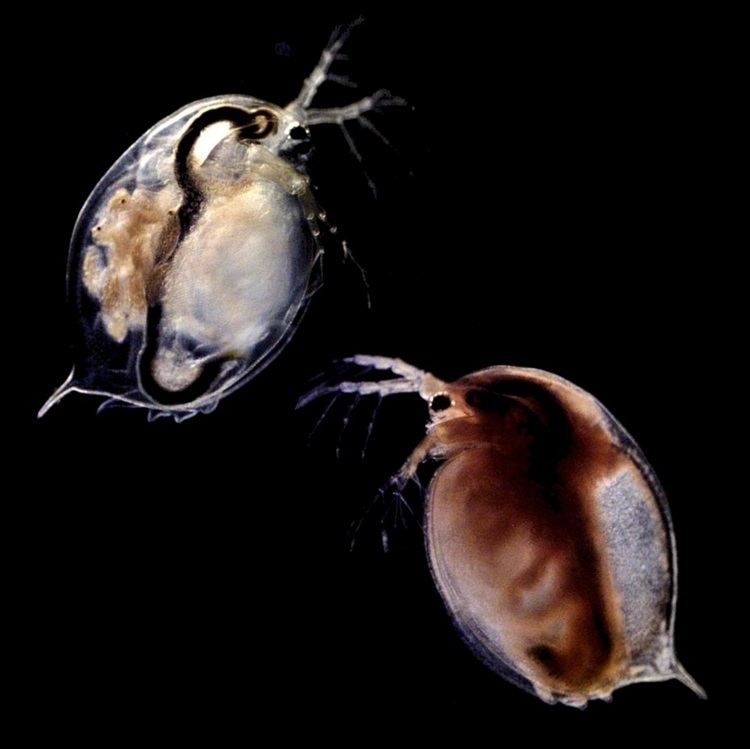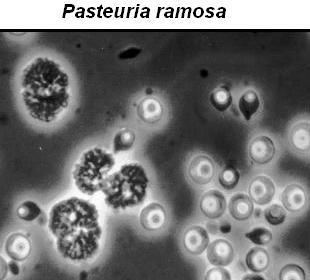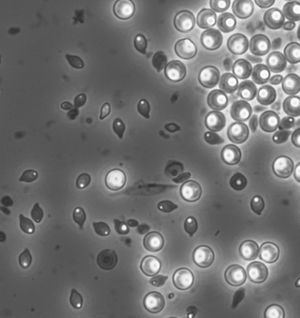Division Firmicutes | ||
 | ||
Similar Pasteuria, Pinguicula ramosa, Daphnia magna, Ordospora colligata, Pratylenchus penetrans | ||
Pasteuria ramosa is a gram-positive, endospore-forming bacterium in the Bacillus/Clostridia clade within Firmicutes. It is an obligate pathogen with cladoceran crustaceans from the Daphnia genus serving as its hosts. An established and widely used coevolutionary model of host-pathogen interactions exists with P. ramosa and D. magna.
Contents

Growth and sporulation

P. ramosa is an obligate pathogen and it can only grow inside its host. Transmission between hosts takes place through the endospore stage, and is strictly horizontal. These endospores are highly resistant to different environmental stresses and can remain in the environment for decades without any deleterious effects. The infection starts when a Daphnia has ingested a spore of P. ramosa during filter feeding. The spore activates and attaches to the host esophagus. The pathogen then enters the body cavity of the host by penetrating the esophagus wall. Once inside the body cavity, the bacterium begins to propagate in cauliflower like colonies. After the infection has spread throughout the host, the bacterium begins to sporulate. The spores are shed into the environment from the dead host and can remain in the sediment for decades while maintaining their infectivity.
Pathogenicity

The infection success of P. ramosa depends on its ability to attach to the host esophagus and to spread into its body cavity where the propagation of the pathogen takes place. The attachment step of the infection depends on the genotypes of the host and the bacterium, meaning that only certain host genotypes can be infected by certain strains of the bacterium. During P. ramosa infection, the size of the Daphnia increases significantly. This phenomenon is known as pathogen-induced gigantism. The fecundity of the host is reduced due to the early induction of castration. In addition, the lifespan of the host is significantly reduced.
Host range
P. ramosa has been found in D. magna, D. pulex, D. longispina, D. dentifera, and Moina rectirostris.
Coevolutionary model with Daphnia magna

P. ramosa has coevolved with its host Daphnia magna. The mode of coevolution in this system fits the model with negative frequency dependent selection where the rare genotype is favored since the more common host genotype is more likely to become the target of a specialized pathogen.
